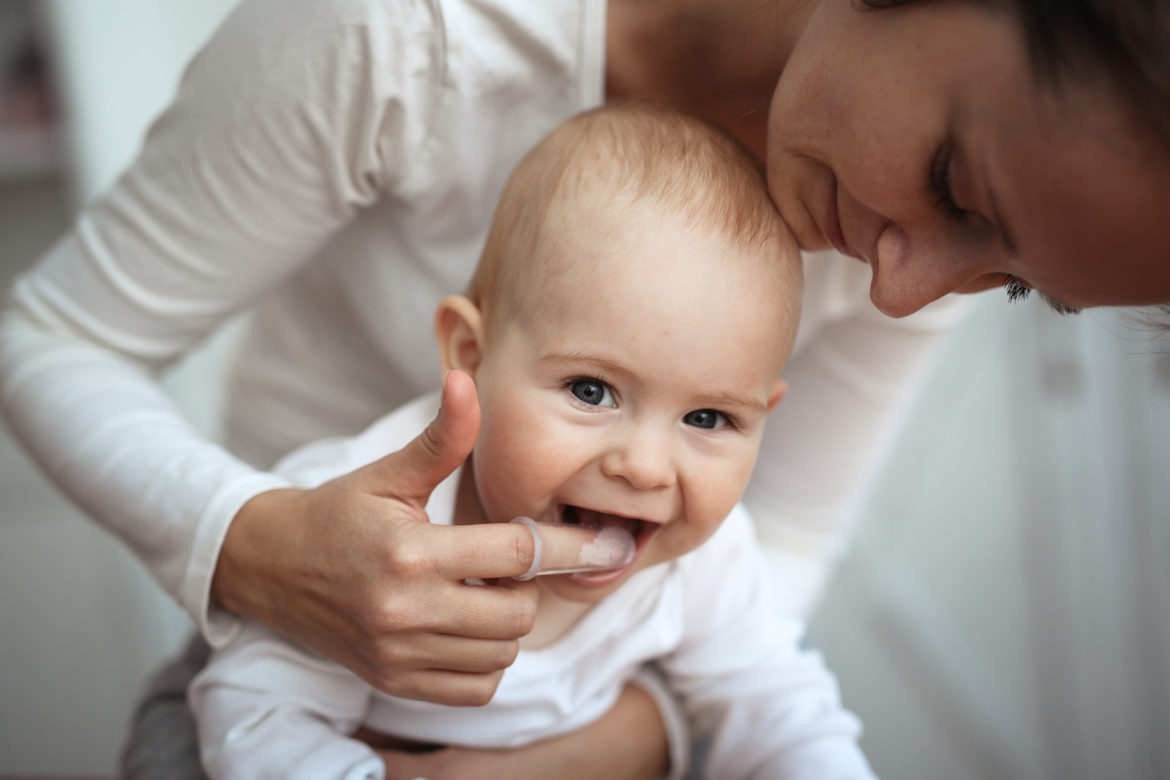- A baby can teeth as early as three months or as late as 12 months old.
- Use a toddler toothbrush, toothpaste, or a finger toothbrush to clean your baby’s teeth.
- But, it is important to wash baby’s gums before you give them teeth.
- For more information, visit Insider’s Health Reference Library.
An exciting and beautiful milestone is when your baby’s very first tooth appears. The average time it takes for a baby to get their first tooth is three months.
Be patient if the first tooth doesn’t show up by that time. Each baby has a different schedule and their teeth will arrive at a different time.
“Kids really vary a lot with when they get teeth, says Gina Posner, MD, board-certified pediatrician at MemorialCare Orange Coast Medical Center. “Most children will get their first teeth between three and twelve months of age.
Your baby’s first teeth are usually the bottom front two
The first teeth you’ll likely see pop up are the bottom front two, also known as the central incisors, says Posner.
The top two central incisors, which will grow next, will be the next. The lateral incisors are next, which are the teeth to either side of the front teeth. These are followed by the molars, which fill in front and back with surrounding teeth.
This is the most common. If your baby’s baby’s teeth start erupting in an unusual pattern, don’t worry.
“Kids are very, very odd with how they get teeth. It’s very unpredictable,” Posner says so. It takes months for the mouth to fill in, and it can take up to age three for all 20 primary teeth to come in, according to the American Academy of Pediatrics.
How to clean your baby’s teeth
As soon as teeth start popping up, it’s time to get started on oral hygiene. “I don’t think it’s ever too soon to start brushing those teeth,” Posner explained that children are as vulnerable to tooth decay as adults.
Here are three ways to brush your baby’s pearly whites.
- Washcloth: Even before your baby has teeth, you should clean the gums by gently running a clean, damp washcloth over them. It is important to care for the gums as well. It’s a great way to get your baby comfortable with the next steps in tooth brushing.
- Finger toothbrush: There are many options of little brushes you can put on your pointer finger, finger puppet style. These brushes are typically made of silicone and are very soft. These can also be used on gums and new teeth. “I’d probably say at the very beginning, the finger brush is probably the easiest,” Posner says.
- Toddler toothbrush: When more teeth have come in and the baby is not so much a baby anymore, it’s time to use a “real” toothbrush with soft bristles. Although they will eventually be able hold the toothbrush on their own, you’ll still need to give them lots of guidance and help.
What toothpaste to use
As soon as you start seeing those teeth, break out the toothpaste.
Use a toothpaste that is specifically designed for toddlers and babies.
Some parents might be reluctant to give their baby fluoride toothpaste. However, there is general agreement that giving your child a little bit of fluoride toothpaste is fine. “Dentists are actually saying to put a tiny grain of rice or smaller size of fluoride toothpaste on, and that amount is safe to swallow,” Posner says.
You can start using a small amount of toothpaste once your baby is older and is able spit it out.
You don’t have any need to brush your baby’s teeth after each meal. According to Posner, “morning and night, twice a day” will do the trick. The American Academy of Pediatric Dentistry also states twice daily brushing will suffice.

